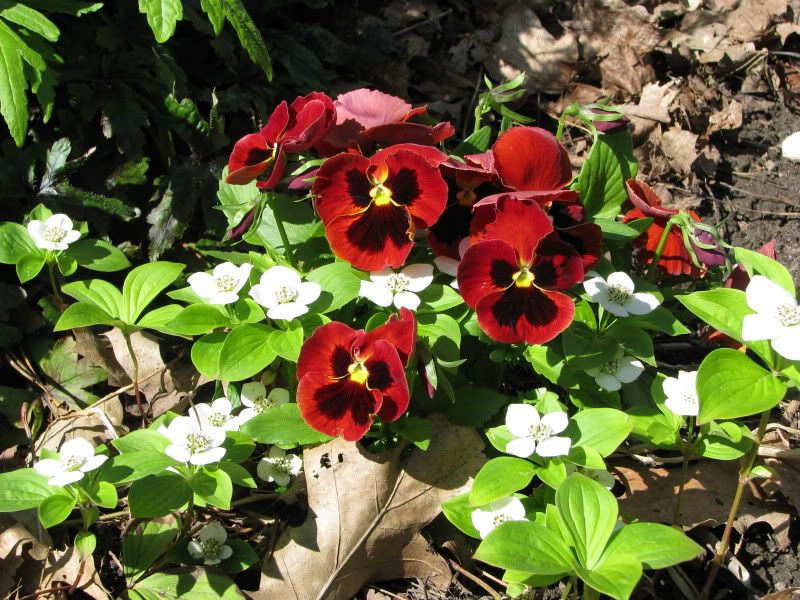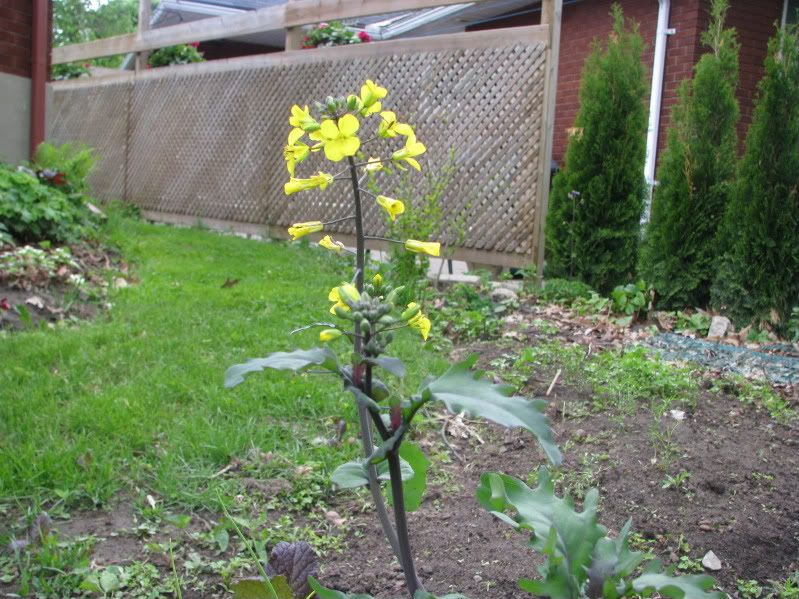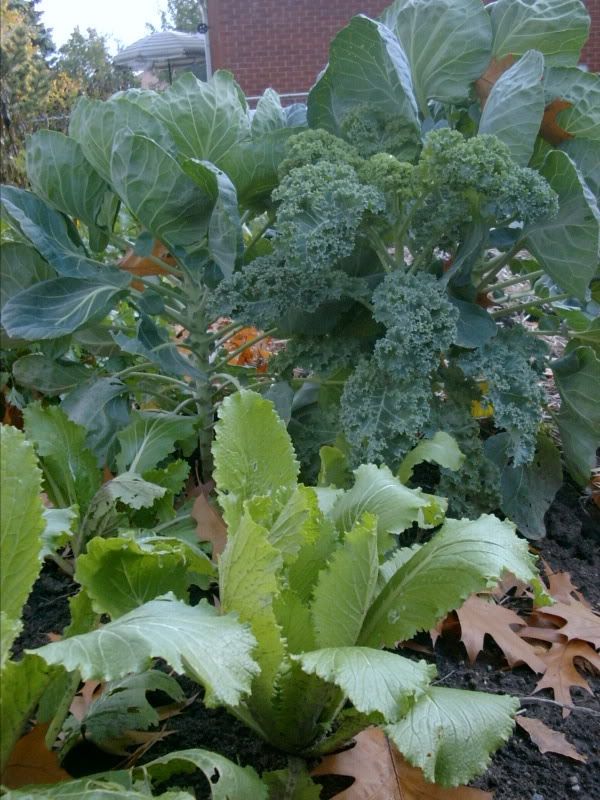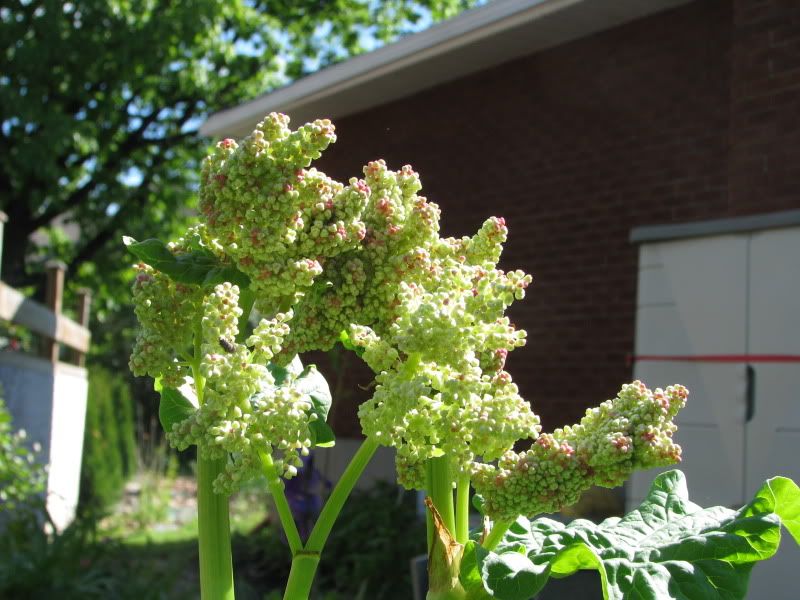Amoung the pink flowering edibles I spotted today are Rugosa Rose with edible petals and plump, colourful hips in the fall. Here shown with edible spiderwort or Tradescantia virginiana , possible a hybrid though and if so I'm not sure of its edibility. Another google project.
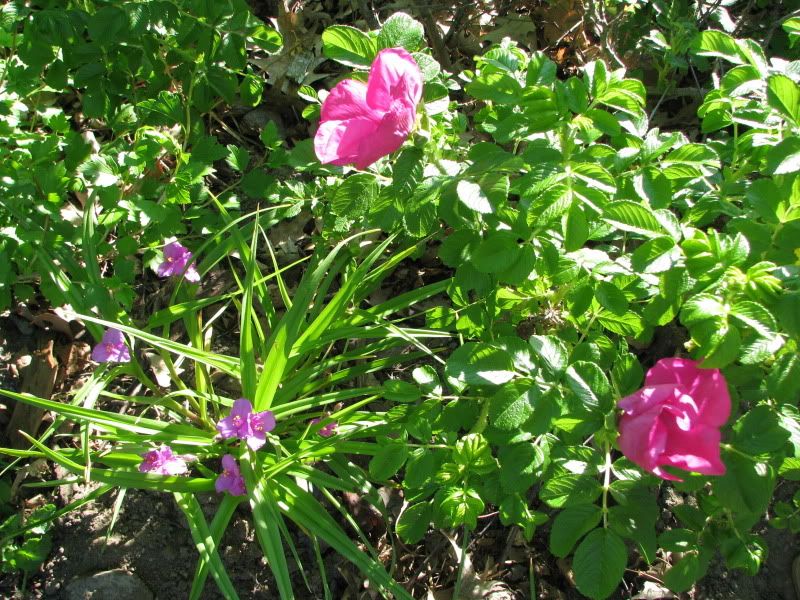
Rugosa rose in bloom with spiderwort.
Yellow, edible podded pea with pink / purple flowers is growing up a bamboo stick trellis in the middle of my circular veggie garden.
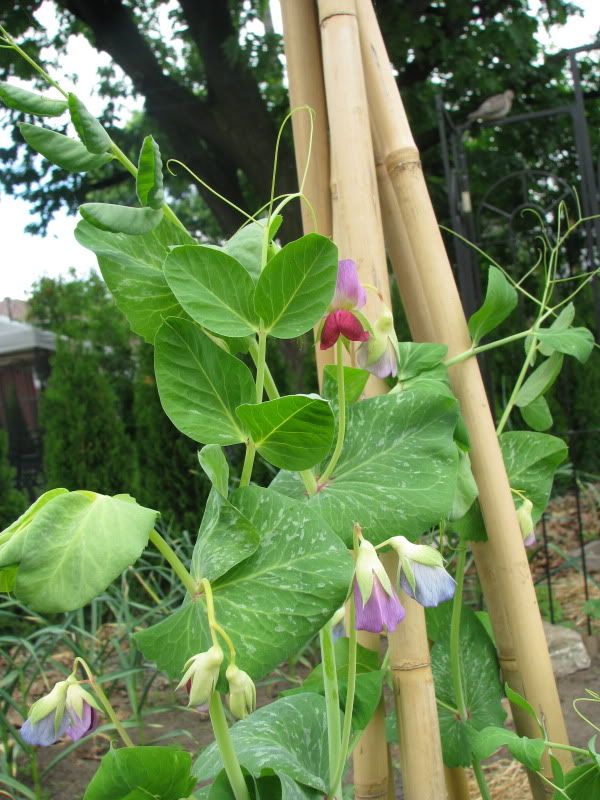
Lovely purple blossoms promise golden peas.
Poppy mallow, or Callirhoe involucrata, has a beautiful fushia cup flower. Its leaves are edible, as are its roots which are rumoured to taste like sweet potato. I haven't tried them yet as I just planted it this year. I have some started from seed but they are about an inch high. This one was purchased at a nursery but I really shouldn't have cleared them out of poppy mallows as the next time I went to get some more, they were all gone.
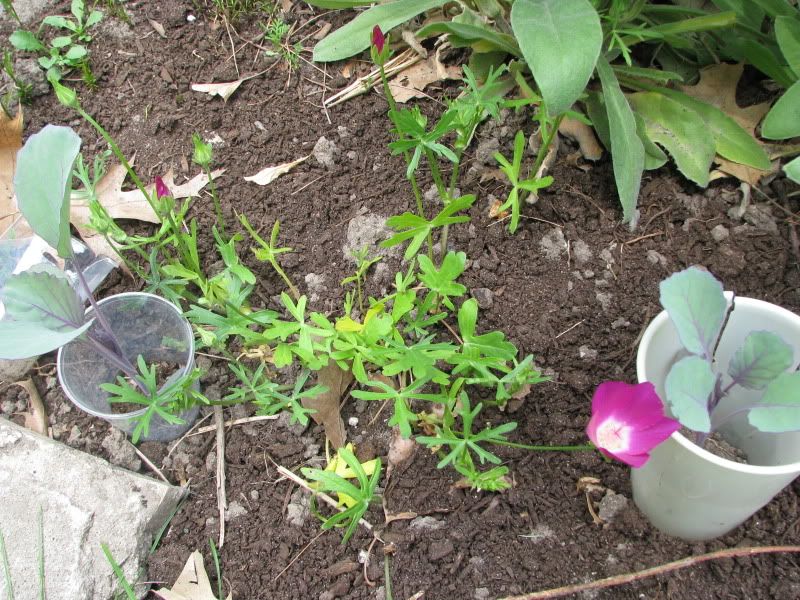
Poppy mallow meandering around the front garden bed. Conditions are hot and dry, perfect for this plant. Planted here with some cabbage seedlings... we'll see how they do. It's their rotational turn in the less than perfect conditions for growth.
My rattail radish is in bloom though it did not have the purple and white blooms I expected, more pinkish and white. The plant also bolted very young but that's not surprising in the crowded, dry and hot conditions under which I planted it. Here are some blooms shown with rose campion leaves in the background:
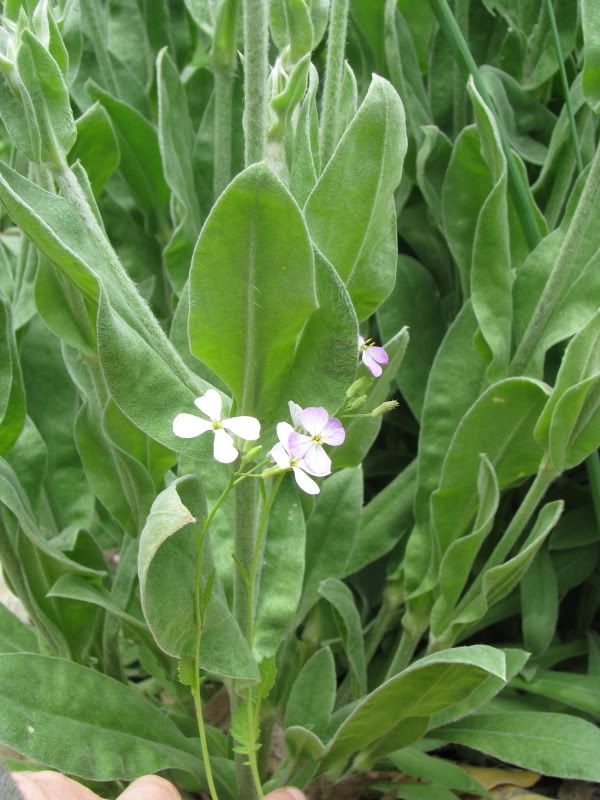
I'm intrigued by a radish with spicey pods, especially as I'm not a fan of its roots.
Looks like my Salad Burnet or Sanguisorba minor is going to flower this year too. Its leaves are supposed to taste like cucumber but I'm not really convinced. It is grown here with some truely tasty plants including orach, mallow, and chicory. I also just noticed the pink tinged petals of english daisy or bellis perennis - another edible plant.
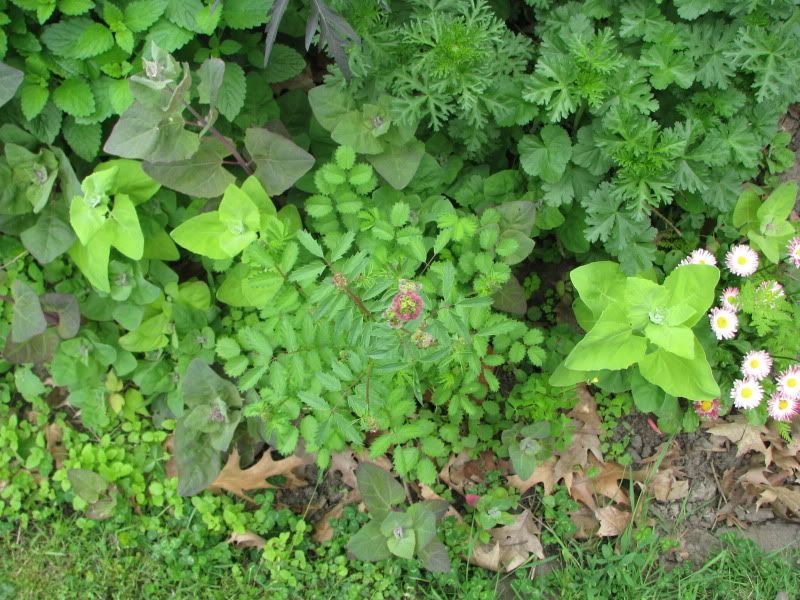
Salad burnet in the centre, just about to flower.

